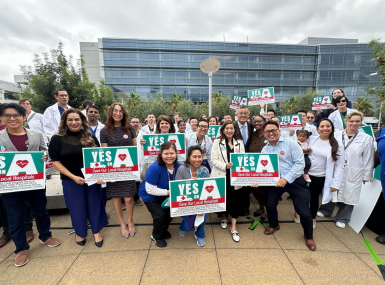NACCHO releases report highlighting impact of COVID-19 response on local public health departments
Author

Blaire Bryant
Upcoming Events
Related News

Key Takeaways
On April 28, the National Association of County and City Health Officials (NACCHO) released the results of their national survey on local health department (LHD) frontline operations in a report titled "2020 Forces of Change: The COVID-19 Edition." The survey was conducted by NACCHO between October 2020 and March 2021 and measures the impact of the COVID-19 pandemic on local public health capacity.
The report highlights several key survey findings, which include:
- LHDs spent a total of $3.25 billion on COVID-19 response efforts.
- 51 percent of all LHDs experienced harassment as a result of COVID-19 protective measures enacted in 2020 and 65 percent reported that federal, state and local agencies did not provide any additional support or protections in response to the public backlash.
- Decades of federal disinvestment in public health left LHDs without the appropriate resources and staff to adequately respond to the pandemic. As a result, 71 percent of all LHDs had to hire at least one additional staff member to assist with their COVID-19 response operations, with 24 percent adding an additional five to 25 staff members.
- 65 percent of LHDs spent over $100,000 on their COVID-19 response operations in the first year of the pandemic.
- 80 percent of LHDs had to divert resources from core public health interventions, such as environmental health programs, in order to maintain sufficient staffing for the COVID-19 response.
- Preventive health programs, including those supporting maternal and child health, obesity prevention and substance use disorder, decreased capacity by over 60 percent.
Approximately 70 percent of the nearly 3,000 LHDs are county-based, and another eight percent serve multiple counties. County health departments provide essential public health and prevention services to residents, such as screenings and immunizations; conduct surveillance to detect and monitor emerging infectious diseases; protect the food and water supply; and prepare for and respond to natural disasters and other public health emergencies. They also implement health promotion and health risk education programs to promote healthy behaviors, as well as work with community partners to lessen the burden of chronic disease on communities and reduce health care expenditures.
Unpredictable and insufficient federal investments in LHDs over the past decade, coupled with the stress of the COVID-19 pandemic response and the ongoing substance use crisis has strained the ability to sustain core public health operations. Counties support additional federal investment to boost the workforce and operational capacity of our LHDs and will continue to work with our federal partners to advance this priority.
Click here to view the full report from NACCHO and here to view the key facts infographic.
Additional Resources
Resource
Counties and the American Rescue Plan Act Recovery Fund: Public Health Infrastructure

Related News

CMS issues new guidance on Medicaid Community Engagement Requirements
On December 8, the Centers for Medicare & Medicaid Services (CMS) released a Medicaid and CHIP Services Informational Bulletin (CIB) directing states on how to implement the Medicaid community engagement requirements enacted under Section 71119 of the One Big Beautiful Bill Act legislation (Public Law 119-21), or H.R. 1.

California county sales tax measure backfills federal healthcare cuts
Santa Clara County, Calif. will raise an estimated $330 million each year from a sales tax to backfill lose Medicaid funding.
